Reptile & Amphibian
News Blog
Keep up with news and features of interest to the reptile and amphibian community on the kingsnake.com blog. We cover breaking stories from the mainstream and scientific media, user-submitted photos and videos, and feature articles and photos by Jeff Barringer, Richard Bartlett, and other herpetologists and herpetoculturists.
Wednesday, December 17 2025
By Jon Poff
Wed, December 17 2025 at 15:26

Build in the Public Update
You now know our mission statement.
Ready to see what we've been working on??
We heard you loud and clear. You want a better mobile experience from Kingsnake. This is our first and top priority.
Our development team beautifully stated,
“We are rebuilding Kingsnake with a new, responsive look that displays properly on a desktop, tablet or mobile device”
Read more about what is coming next and see for yourself what we have been working on
Continue reading "Build in the Public Update!"
Wednesday, December 3 2025
By Jon Poff
Wed, December 3 2025 at 18:58

Kingsnake has been under new ownership for just shy of 4 weeks and what a ride it’s been.
Spencer gave us feedback to "Build in the Public" during the Next Gen Retics Podcast. Great idea! You will begin seeing regular updates from us about what we're working on to make kingsnake the best it can be for you, the community.
Today we'll share the Mission Statement that's been guiding us:
KINGSNAKE is for EVERYONE.
KINGSNAKE makes us SMARTER.
Kingsnake started as a central hub of the community. With Kingsnake being for EVERYONE it allows for diverse questions and a plethora of answers. With limited censoring and filtering, each of us are forced to think for ourselves, consider the information provided, and then make our own decisions. With this comes personal growth, community development and the overall betterment of the glorious animals we care for and love.
Thanks for being with us on this journey.
Friday, November 21 2025
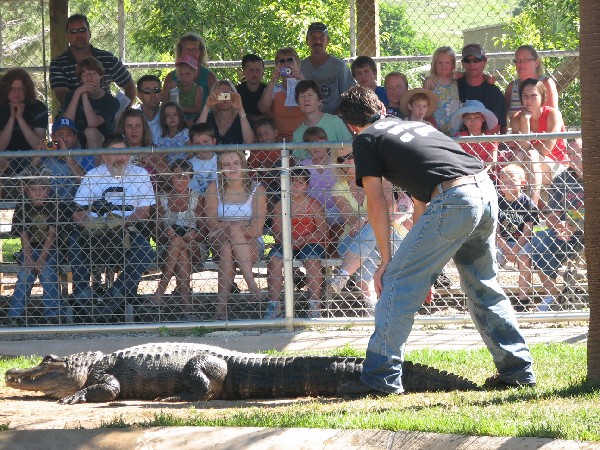
The "Wrestle a Gator" educational show at Reptile Gardens from when Cindy visited. Herper Approved.
Reptile Gardens had a tragic overnight fire in one of their off display buildings that impacted all of their American Alligators from their educational program as well as their African Spur Thigh Tortoises and their Red Foot Tortoises, their other giant tortoises are houses in a different building for winter and are safe. Long time members of the site might remember that Reptile Gardens hosts me for a week several years back for an amazing behind the scenes experience that I was able to share with all of you, including sharing their tortoises and alligators and their show. You can see the photos here.
Our hearts at kingsnake are with the entire team at Reptile Gardens, most of all currator of animals Terry Phillip. You can feel the love he has for the animals he cares for in his statement. We have included it after the bump.
Continue reading "Tragic fire breaks out at Reptile Gardens"
Wednesday, November 19 2025

Each Sunday USARK is reaching out to a new state and this week it is Kansas! They are trying to spread awareness about the organization and what work they do. From their post!
If you have a pet store, veterinary office, or public exhibit that works with reptiles or amphibians in Kansas, USARK will send you a FREE business package that includes brochures, stickers, and possibly more. Please tag any businesses that might be interested! Email vanessa@usark.org with your company name and address if you are in this week’s state and want to assist.
We will randomly draw a new state every Sunday. Please feel free to comment and show your support as a member, advocate, fan, or herp owner.
Get ahold of Vanessa and represent! You can view the original post here.
Saturday, November 15 2025
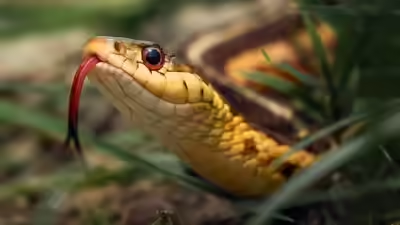
Many people talk about how snakes live a primal existence driven by instinct, but those of us who work with them know they do have the ability to learn routines and people in some sense, but exactly how does that work?
A recent study using corn snakes sheds some light on that!
In this study, corn snakes (Elaphe guttata guttata) successfully learned to navigate mazes and consistently found the correct route to reach shelter or prey. They also avoided areas where they had previously encountered stress, demonstrating their ability to store and recall experiences. This memory is not emotional or social, as seen in mammals, but functional; it allows snakes to adapt their behaviour to avoid threats, locate resources, and navigate their environment efficiently. Such findings challenge outdated assumptions about reptile cognition and highlight their evolutionary intelligence.
Im telling ya, this was a cool article with a link to the study. Take a little time this weekend with your coffee and check it out here!
Wednesday, November 5 2025
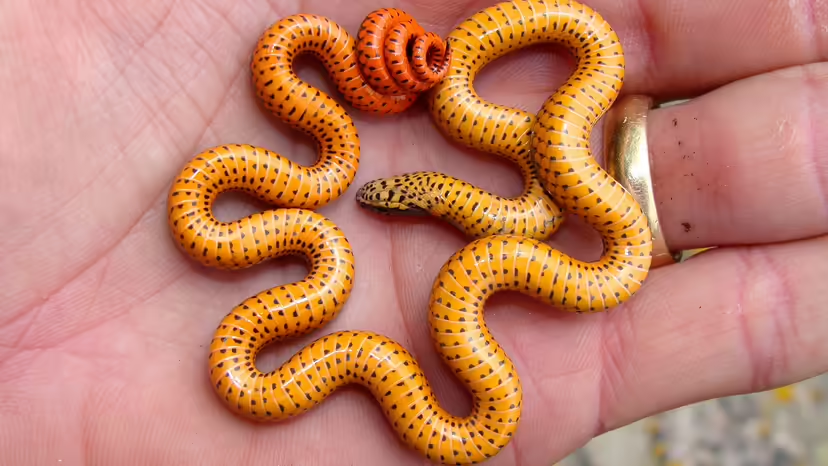 Matt Jeppson / Shutterstock
Matt Jeppson / Shutterstock
Typically I would share REAL news here, but when I was doing a news search, in between the stories of the most infestest lakes or river and the largest and most deadly and scary stories, there was a click bait article that stood out.
10 Cutest Snake Species That Have Us Squeeing
I know a good batch of you are cringing right now but you know what? These pages help our cause. They make our animals seem less scary to those who have fears. They make them more approachable. They bring down the mystery, the danger and the scary level. This is important. This is something we need. While the world outside of us is still going crazy USARK is still fighting laws every day that restricts our pets and it's the little things like that that help us.
It's clickbait, so if you don't want to go, to the site, the full list is after the bump, or you can go here to see it too!
Continue reading "10 cutest snakes as determined by TEH INTERWEBS"
Monday, November 3 2025
 I have had a lot of people reaching out who have forgotten their passwords or even usernames! I know it has been a while for some of you and with the changes, you aren't sure who to reach out to!
If you need help recovering your account right now, please feel free to reach out to me at cindyatkingsnake @ gmail.com (remove spaces obvs) and I will be happy to get all things squared away for you! Remember, we are still working through the transition and rebuild so everything is still "classic" Kingsnake at the moment. As time goes on you will start to see changes, but for now enjoy the classic.
Tuesday, October 21 2025

In 1995 I, along with some other reptile enthusiasts (Joe Forks,Gerry Salmon, Troy Hibbitts, and others) created a web page for gray-banded kingsnake hobbyists called The Alterna Page. By 1997 one thing led to another and it had morphed into what today is kingsnake.com.
That marks 30 years building and maintaining web communities for reptile hobbyists around the world. That is almost half my life. But all good things eventually must come to an end and after discussing it with our sponsors and staff I have concluded it is time for me to retire to pursue other things in my life, and for kingsnake.com to retire as well.
I want to thank kingsnake.com's primary sponsors, LLLReptile.com and RodentPro.com, along with the staff, Cindy Steinle, Melody Golubski, Mark Kennedy, Gerry Freymann, Dick Bartlett, and Ted Hatfield who volunteered his time looking after our servers. Special thanks go to Christie Keith. It is because of their dedication that kingsnake.com has lasted so long. As well there are literally thousands of other advertisers and community members that made kingsnake.com the place to be for herpetologists and herpetoculturists during its great years, from 1999-2016, when some would say the reptile culture was at it's peak. I met many of these thousands of people at countless reptile expos and consider many of them my friends.
Along the way kingsnake.com pioneered many new things for the reptile community and industry, such as topic/species based message boards (forums), live chat symposiums, reptile blogs, podcasts, and video interviews. Many of the fights in the forums were epic.
Most remembered will be kingsnake.com's classifieds, for many years the Internets most popular reptile and amphibian sales tool. It helped turn a random group of like minded hobbyists into a real industry. At it's peak there were over 2200 active classified accounts.
Officially kingsnake.com will close down on October 31,2025. If you have your pictures on the site, or forum posts or other content that you want to save, please do so now, they will not be available on our systems after October 31. If you have a paid classified or other advertising account your account services will still be functional until October 31, or when your contract runs out if sooner.
If you would like to continue to post classified ads until the close date of October 31,2025 please feel free to register for a free classified account and post away. We will be disconnecting our advertising purchase system this week.
Though we are closing we are not filing bankruptcy. We go out clean, all our debts settled and all our bills paid. And if someone is interested in continuing kingsnake.com's legacy I will entertain offers until October 31
This has been a very hard decision, but it is the right one, and it is the right time. I will miss being an integral part of the reptile hobby and culture.
- Jeff Barringer
Wednesday, September 18 2024

Photo of Lil Crusher and I in August at an educational event. He is well on his way to being healthy here.
When I got the text about the alligator that was found by Lake Michigan in November I never realized how attached to him I would become, but ya know, I should have. When the grizzled shelter manager tells me I need to come in because he is worried about the alligator, I should have figured that I would fall head over heels for an animal that I never would live with. He is named Lil Crusher, after Reginald "The Crusher" Lisowski a famous wrestler from our area and if you know me it makes even more sense that this guy is one of my special ones.
On that cold November day, 3 South Milwaukee police officers made waves in our local media when they found an American Alligator in a park in Milwaukee WI on the shores of Lake Michigan, the local media went RAMPANT with stories. We had just had the flamingos blown off course by a hurricane, did the alligator come that way too! Did it maybe swim up here? The stories were simply ridiculous.
Continue reading "For the Love of Crusher"
Wednesday, June 19 2024

Over the weekend Vans dropped their new ad featuring their new Cult X Diamonback BMX shoes with a very emaciated ball python. The Reptile Community was outraged and rightfully so. The animal was in poor condition. By Tuesday however, I had a very hard time locating the advertisement anywhere other than social media sites. Rather than adding to the millions of shares, I instead reached out to Vans to inquire if they pulled it and if so to thank them. I also offered to arrange for them to get a photo shoot with an actual diamondback. Today when I clicked the link via email and anywhere else I could find that would directly link it to Vans and the original ad, this is what I saw.
They heard us loud and clear. While I don't expect Vans to know what a healthy snake looks like, I would expect their photographer and ad agency to know and to do better. I sincerely hope they hire a different team in the future and never use this one again. They heard us loud and clear. I'm quite sure it will be a few days before I hear back if ever, I am quite sure they have been inundated with messages from our community. I would love to see a statement from them. Hello Vans? Ya Got one?
Thursday, March 21 2024
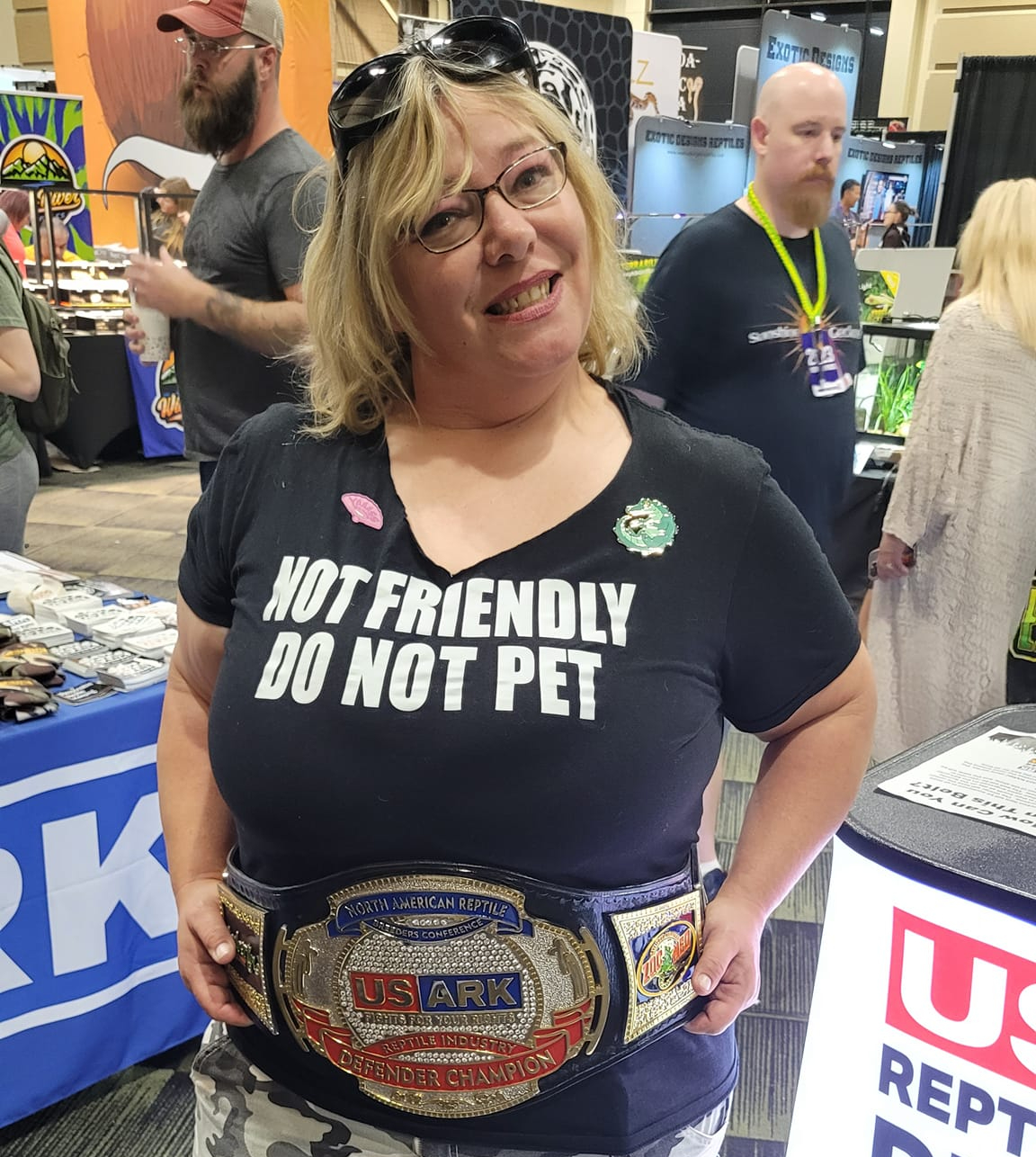 This is me, in all my Tinley Glory. If you need me, just grab me. I will always be there for you.
This is me, in all my Tinley Glory. If you need me, just grab me. I will always be there for you.
The best part about reptile shows is we can be ourselves. We are with our tribe. People who love the same things we do and it should be a fun and safe environment for all of us. The hard reality is that there are bad people everywhere in this world, no matter where you look.
This is going to be a very different post Tinley wrap and bear with me, it is going to probably be long but I promise reptile pictures from the show to lighten the mood that are not ball pythons or crested geckos at the end. Something happened that I felt needed to be addressed and shared even as vague as I intend on sharing. Let's just say, someone was naughty.
Continue reading "Tinley Reflections: An open letter from Mom"
Wednesday, January 3 2024
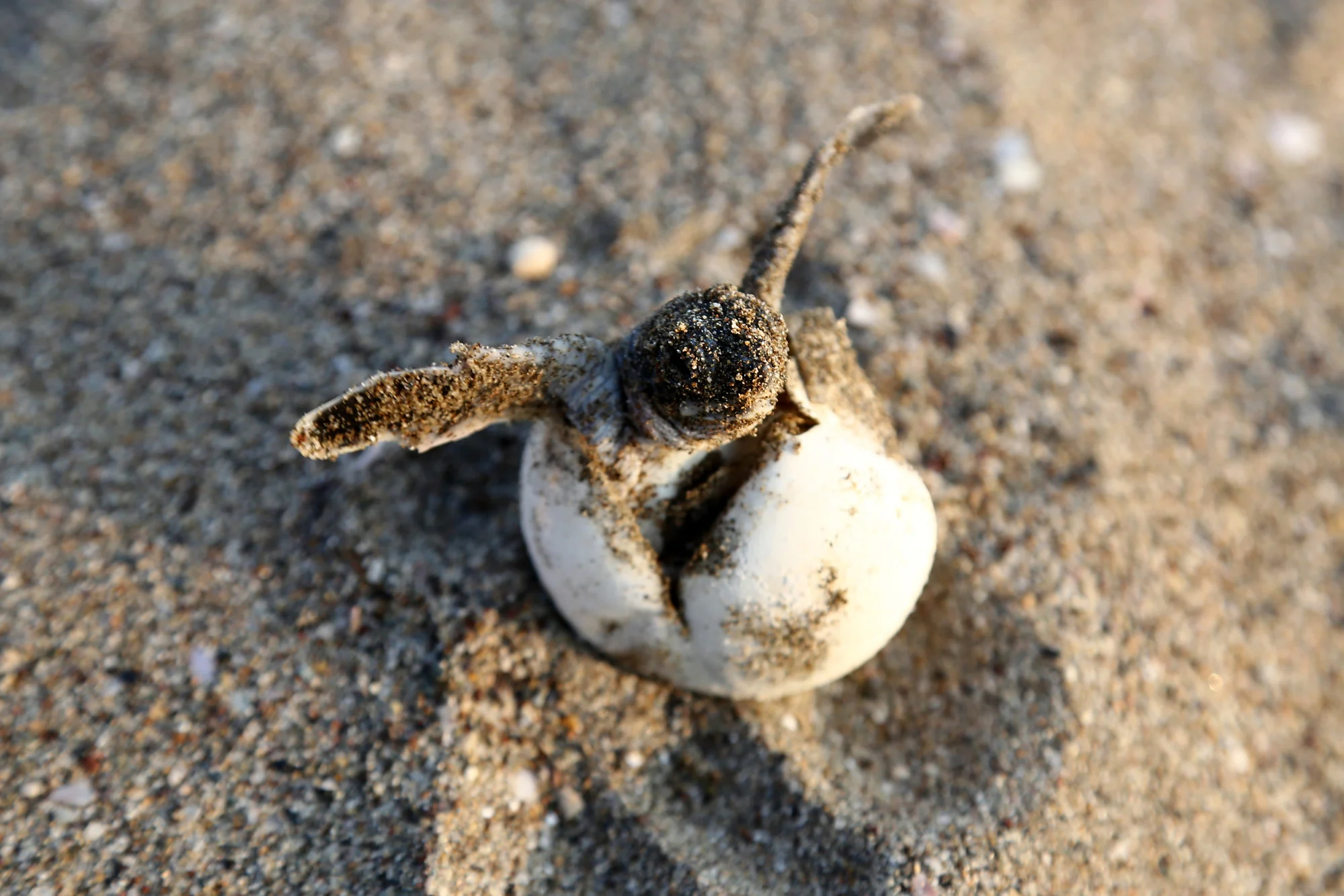 Chelonia mydas, a newly hatched baby green sea turtle. Photo: Shutterstock
Chelonia mydas, a newly hatched baby green sea turtle. Photo: Shutterstock
In Taiwan, saving the Green Sea Turtle on its preferred nesting island was the goal, but drastically impacting the native lizards species was the unintended result. Since 2001, on Badai Beach the only remaining suitable nesting spot on Orchard Island, researchers have protected every Green Sea Turtle Nest with a fine mesh netting. This netting prevented any ground dwelling predators from dining on the babies cooking inside. Orchard Island is also the home of the kukri snakes and the stink ratsnakes, both of which gladly dine on eggs. With the instant loss of their normal food source, they turned elsewhere.
The scientists estimated kukri snakes consumed around 120 sea turtle eggs each year before 2001, which would be equivalent to between 5,000 and 18,000 lizard eggs from the five soft-shelled lizard species on the island.
The team found that while populations of kukri snakes and stink ratsnakes were estimated to have declined by 12 per cent and 8 per cent per year between 1997 and 2020, lizard species saw drops of 11 to 25 per cent every year.
Now conservation efforts need to alter their program to protect not only the Green Sea Turtles, but also the existing native species, especially the lizards. This shows how science works best. As you learn how things are working, you adjust to make things work better.
To read more of how these efforts are changing, click here.
 Credit: Francisco Farriols Sarabia via Wikimedia Commons
Credit: Francisco Farriols Sarabia via Wikimedia Commons
While studying lizard skulls at the National Dinosaur Monument in North Dakota, Dalton Meyer discovered a new species of fossilized Gecko. While inspecting a pair of skulls of previously labeled as European skink ancestors, the use of 3D imaging proved one to be exactly that, however the other emerged to be a gecko type of animal closely resembling the banded gecko common to the US.
What caught my attention the most about the story other than the fact that it was basically about dinosaur geckos (and please click through to the story at the end to read everything) was this part!
In naming the new species, Meyer chose “helioscopus,” which roughly translates into “sun watcher,” and “dickersonae,” which honors his grandmother, Helen Dickerson, his great aunt, Shirley Dickerson, and Mary Cynthia Dickerson (no relation), who was the first curator of herpetology at the American Museum of Natural History in New York City.
“Both my grandmother and great aunt were extremely important people in my life, and my great aunt passed away while I was in the early stages of working on this fossil,” Meyer says. “I was truly honored to have a chance to get to use their family name in this new species, in part as a memorial that will now persist long after I am gone.”
If you remember my first presentation to the International Herpetological Symposium, you know why! To read the full story, and I strongly suggest you do, click here to visit futurity.org.
Saturday, December 9 2023
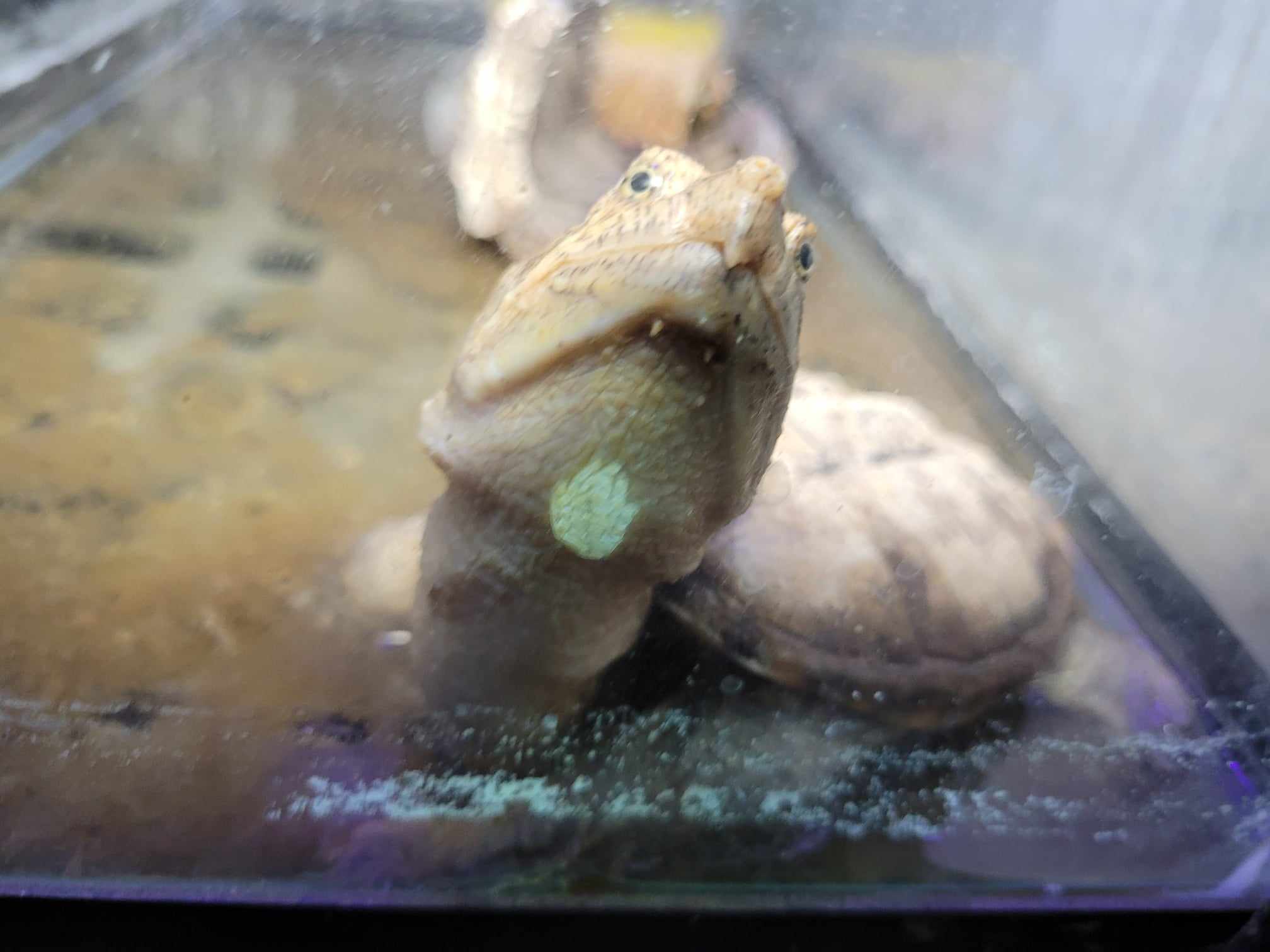 The Snapping turtle in the aquarium at the scene, photo by author
The Snapping turtle in the aquarium at the scene, photo by author
When I saw the message pop up from the director of the shelter, I figured she wanted to let me know I might have a few animals to prepare for. My local news was filled with the story of a large confiscation of dogs in my city. I was not expecting what came next.
"Cindy, are you available to help us tomorrow? We aren't done. Today was just the dogs and there are a lot of exotics and we need you to look at things. There are alligators."
I was still under some restrictions from my shoulder surgery and they knew I was limited in what I could do, but they needed my eyes and knowledge more than my arm. I said the only thing I could. "What time and where do you need me"
Continue reading "Rescuer Struggles as Animal Abuser Gets off with Slap on the Wrist"
Tuesday, September 19 2023
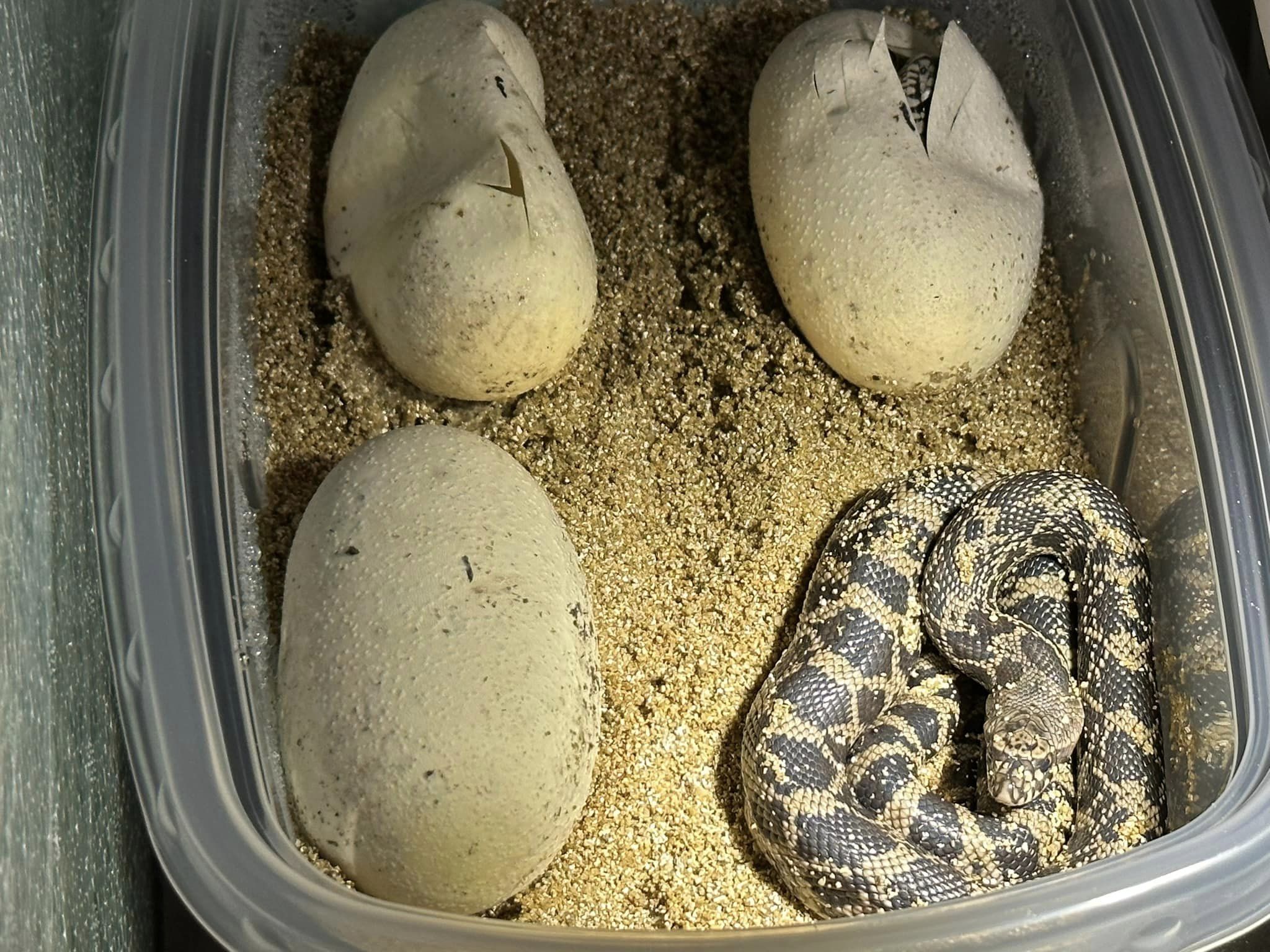 Photo from Chance Duncan - First of 4 hatching Louisiana Pine Snakes
Photo from Chance Duncan - First of 4 hatching Louisiana Pine Snakes
Usually when you hear of endangered species being bred, it isn't in a high school, but that is the cool part of reptiles. Former kingsnake.com volunteer and high school science teacher extraordinaire Chance Duncan likes to bring science to life with his charges in a special way. He has always kept animals in his classroom and after getting over the fear factor of the snakes, he began integrating the Louisiana Pine snakes into his class.
Every year I see students come in my room who are kind of uncomfortable or a little bit nervous but very quickly they realize that the snakes are not these scary monsters that they thought they were," said Duncan.
"They play a really critically important role in their ecosystems. They are very, very important to preserve their presence and keep them around."
Keeping these snakes around is just what Duncan is working to do.
Russelville High School is believed to be the first secondary institution in the world to produce a critically endangered snake species which makes it an amazing accomplishment and a fantastic educational experience for Chance to pass along to the next generation.
Chance, we are so proud to know you!
To read the full story and see all the amazing photos and video, click here!
Monday, September 18 2023
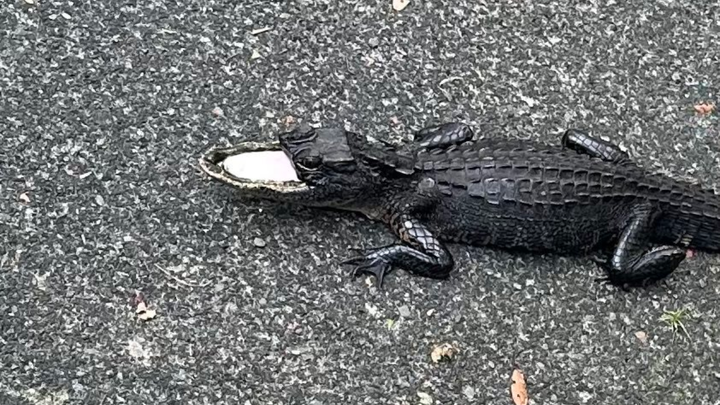 Eustacia Kanter
Eustacia Kanter
Alligators are resilient man. I mean really resilient, they are true survivors. This little gator has been spotted for the last month or so in Florida and was recently captured. The injury, likely from a boat propeller appears to be several months old.
"At first, my brain couldn't comprehend that its entire upper jaw was missing," Kanter told FOX 35. "When I realized, I felt terrible for him and snapped as good a photo as I could get with my cell phone standing at a distance so that I could share it and try to find help."
Kanter contacted the Florida Fish and Wildlife Conservation Commission and an environmental conservation nonprofit in hopes they would help find and rescue the gator.
The alligator appears to be four to five years old and will be kept on a special diet while away from other animals for a while. Gatorland believes it lived in the wild without half its jaw for at least six months, likely eating snails and frogs.
For video with the awesome Savannah from Gatorland, and the rest of the story from Fox, visit here.
Sunday, July 16 2023
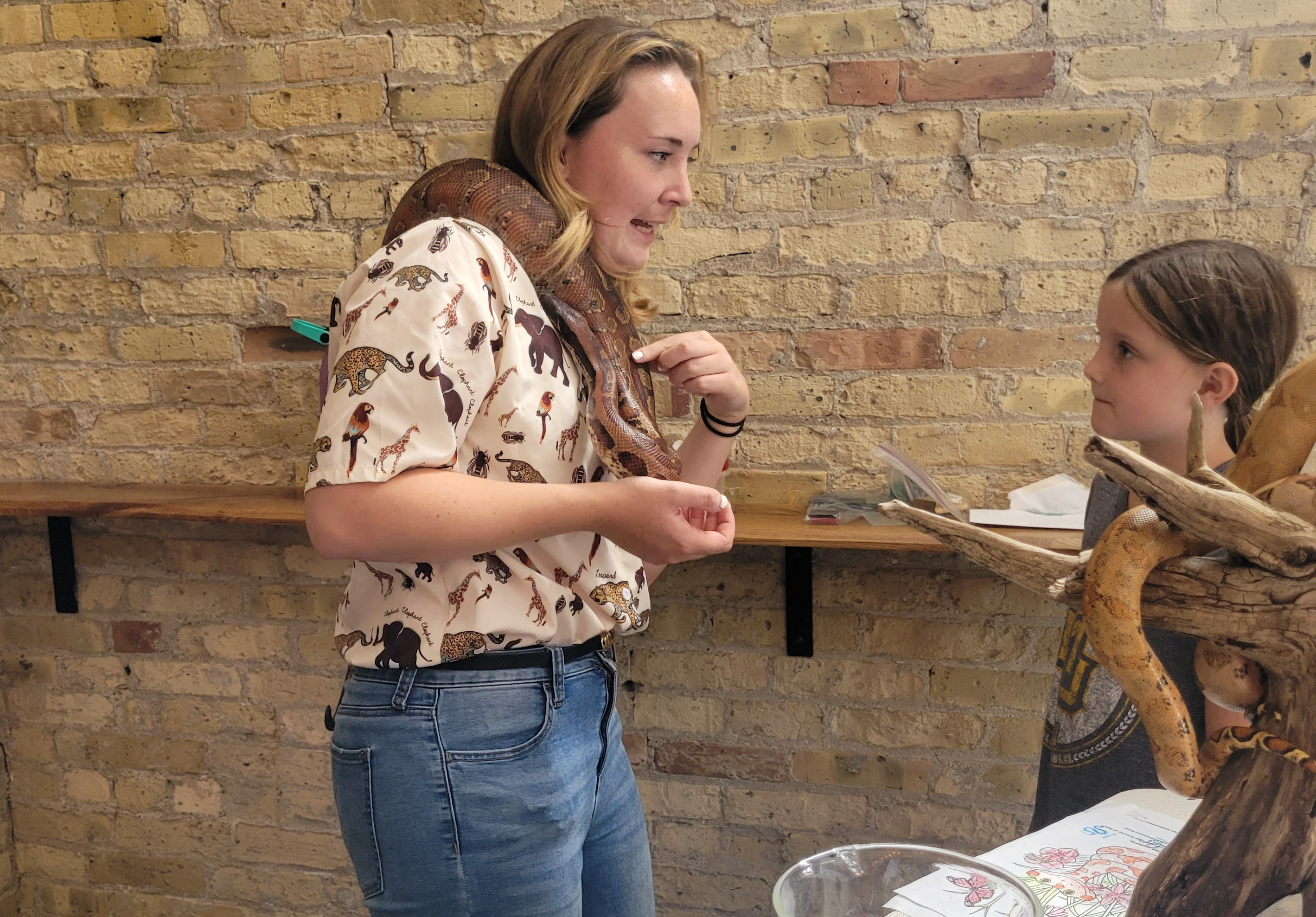
I celebrated World Snake Day a week early last Sunday here in Milwaukee at a fundraising event called "Sipping for Snakes" hosted by the Eastern Massasauga SSP. I mean it is Wisconsin, we do everything with either cheese or beer. I stumbled across the event on facebook and was instantly excited! A fundraiser for rattlesnakes ON MY DAY OFF! I mean what more could I ask for!!!
Continue reading "World Snake Day: Sipping with Snakes "
Thursday, January 19 2023
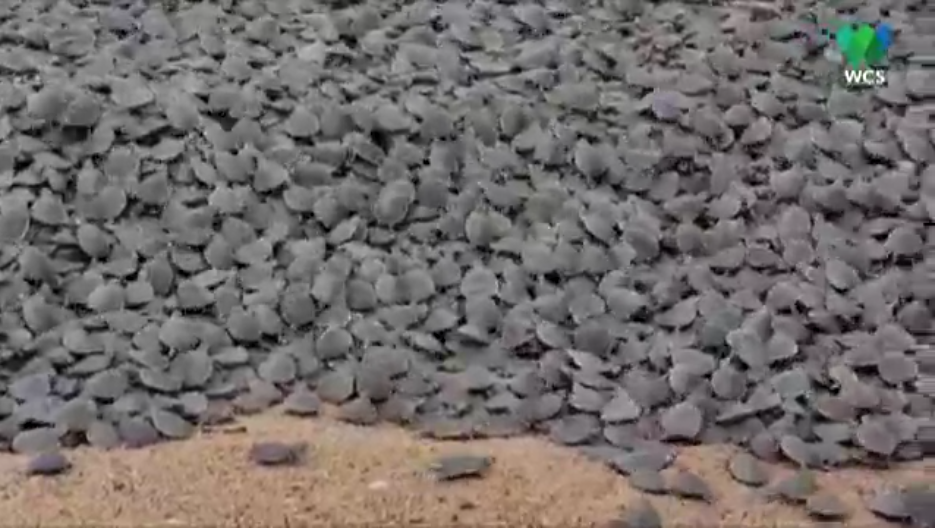 New footage shows hundreds of thousands of baby giant South American river turtles hatching. (Source: Wildlife Conservation Society (WCS) / ECOVALE) New footage shows hundreds of thousands of baby giant South American river turtles hatching. (Source: Wildlife Conservation Society (WCS) / ECOVALE)
Between Brazil and Bovlia along the Guaporé River, scientists recently captured video of the world's largest turtle hatching! Conservation efforts caught the South American River turtles emerging this winter.
Conservationists say coordination between the two countries is important for the protection of the species and hope to establish some sort of protected area for them.
The Wildlife Conservation Society has been working with scientists to use technologies such as drones and thermal images in order to estimate the population of the species there. But, the hope is to be able to use artificial intelligence soon to automate the process of counting the turtles.
Check out the awesome video of these animals hatching here.
Wednesday, January 18 2023
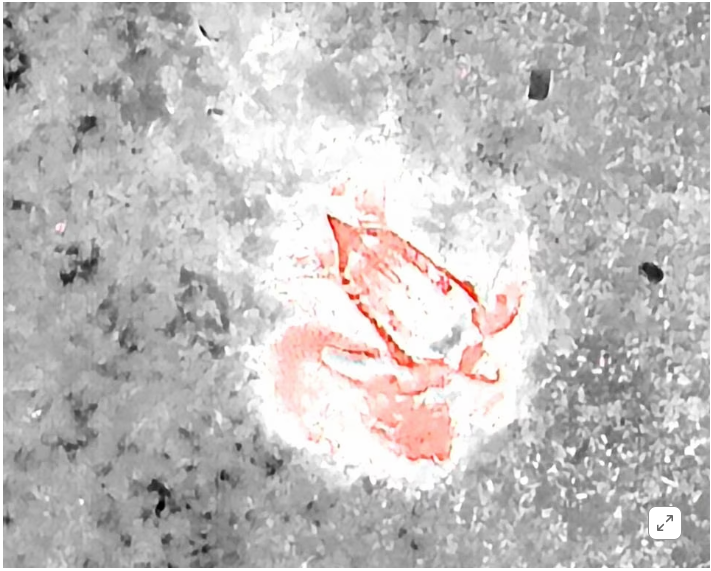 A thermal image of the leatherback sea turtle digging sand, in Phang Nga, Thailand January 14, 2023, in this screen grab taken from a handout video obtained by Reuters on January 17, 2023. Department of Marine and Coastal Resources/Handout via REUTERS A thermal image of the leatherback sea turtle digging sand, in Phang Nga, Thailand January 14, 2023, in this screen grab taken from a handout video obtained by Reuters on January 17, 2023. Department of Marine and Coastal Resources/Handout via REUTERS
Conservation officials in Thailand recently caught an endangered Leatherback Turtle laying their eggs in a nest on drone footage.
The department said a thermal drone was able to record more information than labour-intensive human patrolling techniques, as its sensors could detect the body heat of warm-blooded animals - or more specifically the thermal differences between animals and their surrounding environment - despite the darkness.The technology was helpful in preventing noise and light from disturbing the turtles while nesting, it said.
Check out the awesome footage here.
Wednesday, January 4 2023
 Crocodile researcher Jonathan Triminio talking to students in BelizeJONATHAN TRIMINIO
Crocodile researcher Jonathan Triminio talking to students in BelizeJONATHAN TRIMINIO
Saving a reptile species can be a challenging in it's own right, but what if the benefits are saving an ecosystem too? The Crocodile Research Coalition is attempting to do not only that, but potentially save the world! While it seems like lofty goals, it is all butterfly effect. Or should we say Crocodile effect instead?
THe CRC has been tracking the impact of pollution on the native Morelet's Crocodiles since 2019 for impacts of local pollution on the current stable population. This research can then be used to impact not only the animals in the study, but the ecosystem as a whole. With public outreach provided to residents through the CRC, changes happen.
Dr. Marisa Tellez, Executive Director of the Crocodile Research Coalition, says that the biggest challenge at the moment is breaking down over a century of misguided information and false stereotypes about Belize’s crocodiles while simultaneously fighting against the sensationalism of TV shows and media about crocodiles.
"If we want to ensure the long-term success of any conservation program, not only do the local communities need to be educated about the Do’s and Don’ts living alongside wildlife, but they also need to know the facts, along with being involved to further pride and stewardship of one’s natural world," she says.
To read the full article, visit Forbes here!
Monday, January 2 2023

A side view of the lizard's skull and razor-sharp teeth. (Image credit: David Whiteside, Sophie Chambi-Trowell and Mike Benton/Natural History Museum UK))
The discovery of a new prehistoric lizard shifts the timeline of when reptiles evolved! The remains were found embedded in a rock in storage since the 1950's at the National History Museum in London. Cryptovaranoides microlanius dates back about 202 million years, placing it firmly in the Triassic period. It is also 35 million years earlier than previously recorded reptilian life!
But despite the lizard's small stature, its sharp teeth would have delivered a menacing bite, which inspired the paleontologists to name it Cryptovaranoides microlanius; the species name means "small butcher," while the genus means "hidden" and "lizardlike," a nod to the decades it spent languishing unnoticed in NHM storage. When C. microlanius was alive, it likely preyed on arthropods and small vertebrates on the limestone-rich islands that once surrounded what is now Bristol, according to the study.
To read more about our new favorite dinosaur, click here.
Wednesday, December 28 2022
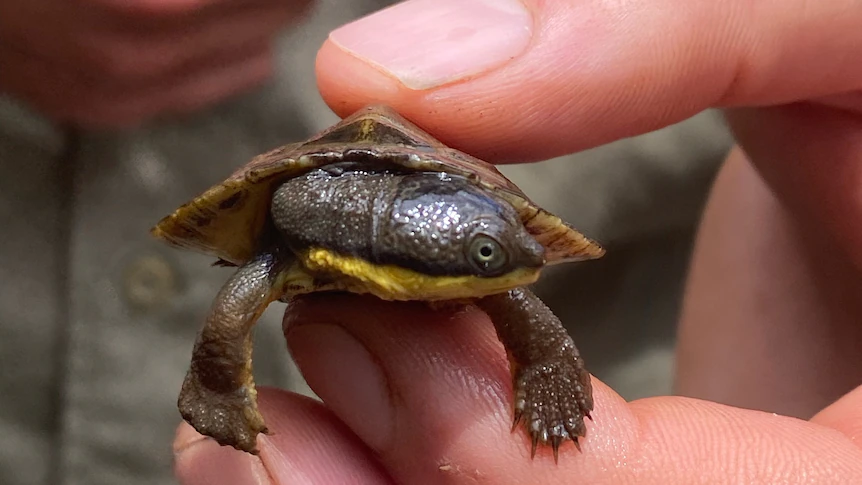
The Manning River turtle has had it's population decimated over time, but recent conservation efforts have been proving successful. In the four years the species has been surveyed, they have only found one potential nest but no evidence of any eggs surviving. However now there is light! 4 hatchlings estimated at a week old have recently been discovered proving the start of species recovery.
"Finding hatchlings for the first time in four years gives us a good indication of habitat, where they are nesting and breeding successfully," he said.
"It means we can target follow-up surveys there and we can learn a bit more about their nesting and early life stage ecology."
To read the full story, visit ABC News here.
Tuesday, December 27 2022
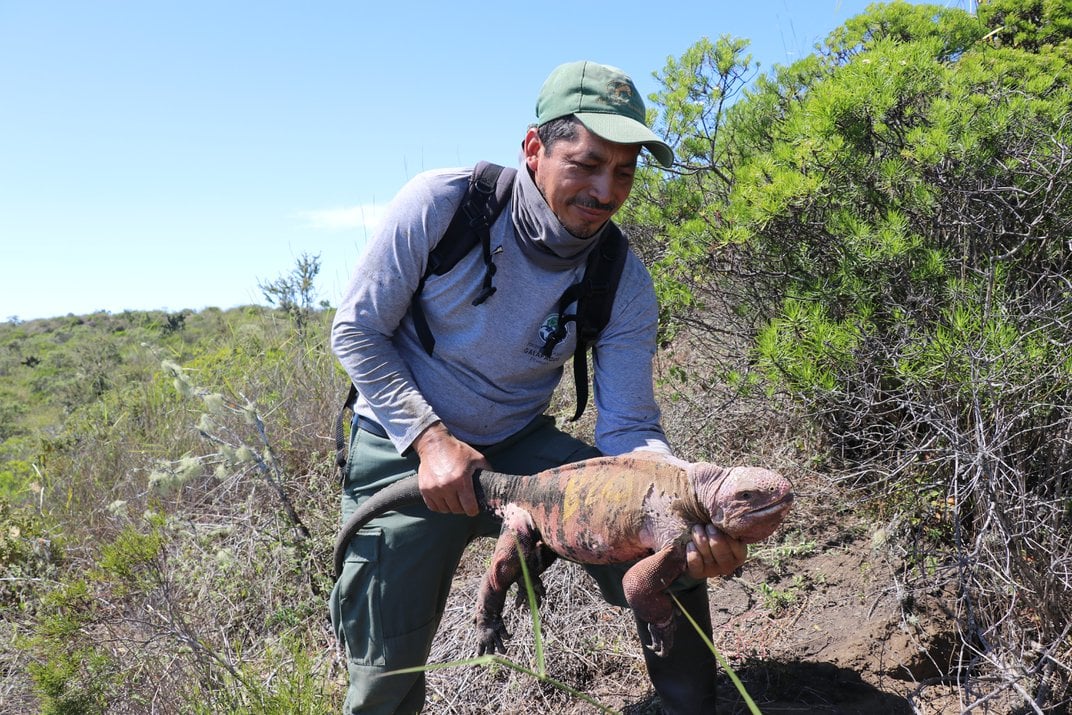
Although originally discovered in 1986, the Galapagos Pink Land Iguana ( Conolophus marthae) took a few years to properly type as their own species. The aging population is critically endangered with an estimated 200-300 animals left. Now we are seeing the first official nesting sites of this rare Iguana, for the first time since the species was fully identified in 2009.
“The discovery of the first-ever nest and young pink iguanas together with evidence of the critical threats to their survival has also given us the first hope for saving this enigmatic species from extinction.” Paul Salaman, president of Galápagos Conservancy, says in a statement. “Now, our work begins to save the pink iguana.”
VIsit the Smithsonian Magazine to read more about this amazing conservation effort here.
Tuesday, June 7 2022
 This week I have the honor of speaking at the International Herpetological Symposium in Atlanta. I will be sharing a variety of stories of my over 25 years working in reptile rescue and with a limited time, only so many stories can be shared. I thought I would share one that didn't make it here as a preview!
The IHS is a fantastic conference held annually in different locations around the world in partnerships with local zoos. The speakers range from people like me who love reptiles and people in the trade to experienced researchers, vets and zoo professionals. There is always the greatest banquet and behind the scenes tour at the local zoo. Just in case you were unaware of what IHS is.
One story I had to cut was that of Wylde Stallion. Sit back and grab a drink, because this is a long one.
Continue reading "IHS: 25 years of Rescue"
Monday, March 22 2021
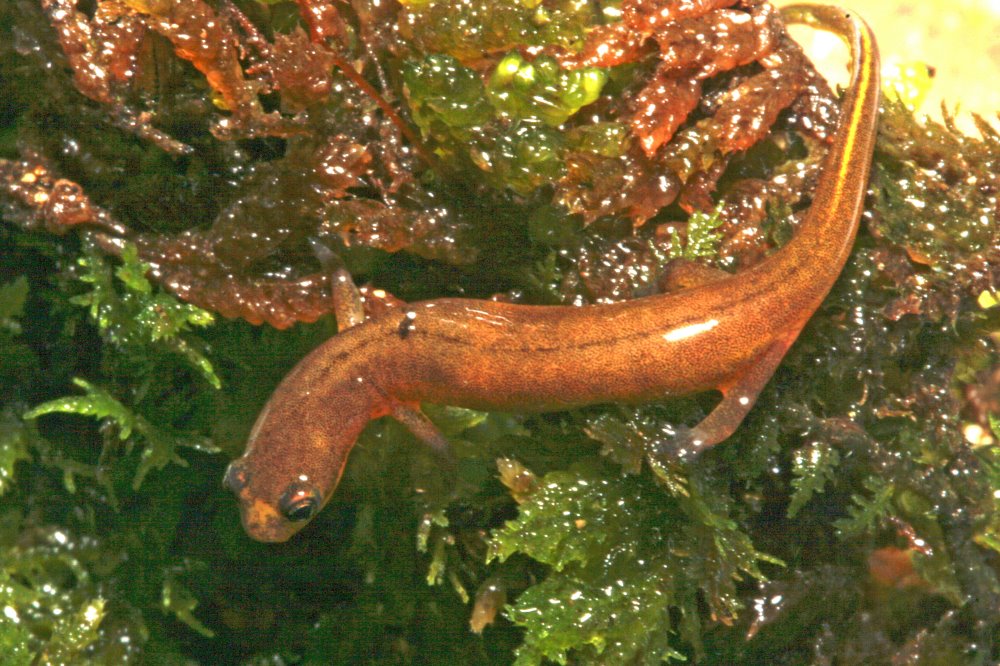
An adult female Patch-nosed Salamander
By Dick and Patti Bartlett
In 2009 a new species of “miniplethodontid” salamander was described. Although looking much like the brook salamanders of the genus Eurycea, research determined that this pretty little miniature was sufficiently different from the brook salamanders to warrant the erection of a new genus— Urspelerpes. This genus contains only the single species, U. brucei. Because of the nose-spot this salamander was given the common name of Patch-nosed Salamander.
It is an uncommon denizen of the leaf-strewn montane streams and stream edges of northern GA and adjacent SC.
As mentioned the yellowish patch on the nose tip is characteristic. Including tail, adults are about 1 7/8th inches long. Unlike the Brook Salamanders on which males and females are similarly colored, the males and females of Urspelerpes differ in color. Females tend to be patternless while males are strongly patterned with a pair of dorsolateral stripes.
Continue reading "Patch-nosed Salamander"
Friday, December 4 2020
 On December 1, 2020 House Bill 6455 (HB6455) was introduced in Michigan that could impact many reptiles keepers. The reptile portion of the bill does primarily impact ownership of venomous, crocodilians and some monitor species. While it is not an outright ban and offers provisions for owners to keep their pets, it can have very far reaching implications.
The reptiles impacted by the Bill are:
“Dangerous reptiles” per HB6455:
(I) A member of the order Crocodilia, including, but not limited to, an alligator, crocodile, gharial, or caiman.
(ii) A member of the family Atractaspidae.
(iii) A member of the species Dispholidus typus of the family Colubridae.
(iv) A member of the family Elapidae, including, but not limited to, a cobra, mamba, krait, coral snake, or Australian tiger snake.
(v) A member of the family Hydrophiidae, including, but not limited to, a sea snake.
(vi) A water monitor or crocodile monitor.
(vii) A member of the family Viperidae, including, but not limited to, a rattlesnake, cottonmouth, bushmaster, puff adder, or gaboon viper.
Our friends at USARK have made it easy to speak out to your representatives. Please visit the USARK page here for the full action alert.
Monday, November 2 2020
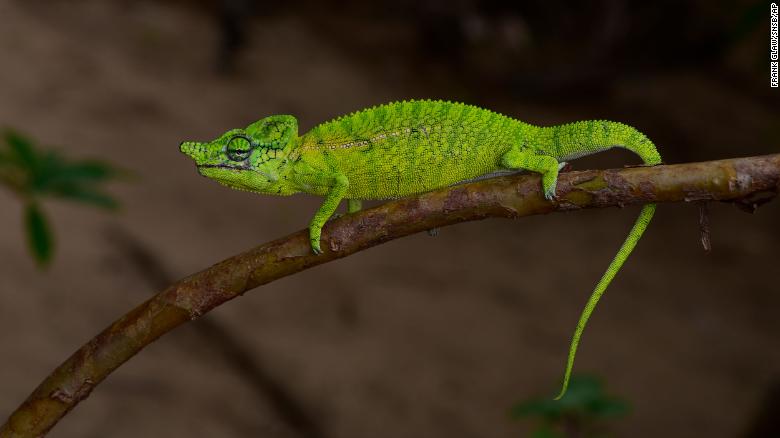 A male Voeltzkow's chameleon in Madagascar. Photo courtesy CNN A male Voeltzkow's chameleon in Madagascar. Photo courtesy CNN
After nearly a century of being elusive, the rare Voeltzkow's chameleon was recently rediscovered on an expedition of scientists from Germany and Madagascar.
"Our planet is probably facing the beginning of an enormous extinction of species, often referred to as the 'sixth mass extinction', the 'Holocene extinction' or the 'Anthropocene extinction'," researchers wrote.
"Rediscoveries of 'lost' species are very important as they provide crucial data for conservation measures and also bring some hope amidst the biodiversity crisis."
To read more and see the video, click here.
Friday, September 4 2020
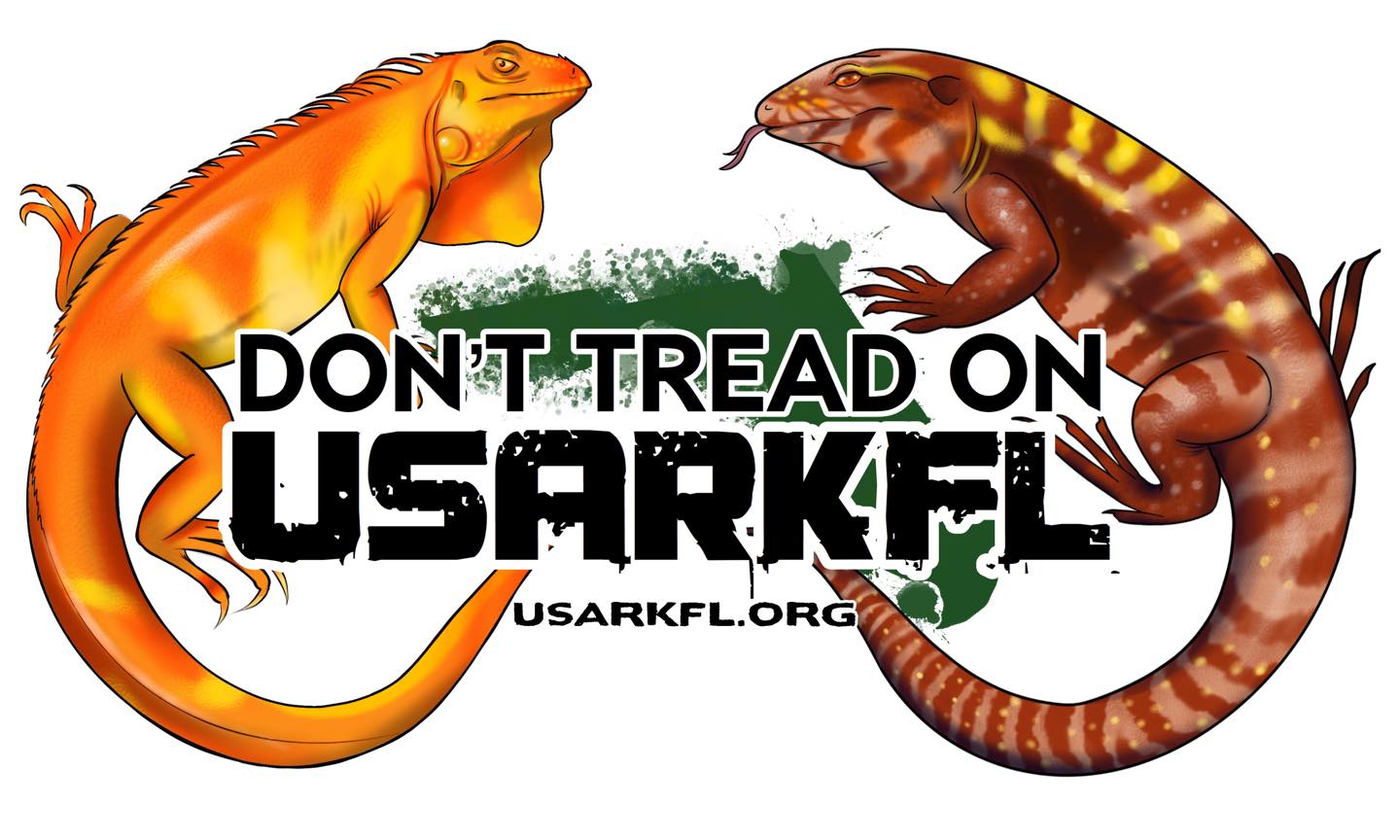
There was some great news regarding the regulation changes for Florida; including Tegus, Iguanas and a selection of large constrictors.
This is the announcement from USARKFL:
We have some news... good news. The judge agreed with USARK FL and found that SB1414 is in fact unconstitutional! We will post full details soon but the judge granted our motion for summary judgment and now we just await his formal order stating the same. Thank you to everyone who supported us. Please keep the donations coming! We must still pay for this lawsuit and future actions. What a win!
NOTE: This will take a few days to all be finalized and for FWC to rescind their Executive Order. We also do not know if FWC will appeal. Also, by "unconstitutional" we mean the Florida Constitution, not the U.S. Constitution. This is a state lawsuit against a state agency, not a federal lawsuit.
Please stay tuned to both USARK and USARKFL to follow updates and please continue to support USARK. They are getting things done!
Thursday, July 16 2020
 Happy World Snake Day!
What is that? Well it is a day that is an easy one! It is a day to focus on conservation and education about snakes!
Snakes are one of the greatest fears in the world, but their importance to our environment as well as our health is enough reason to work to change minds. I grabbed a few fun articles for you to read and share today to help reach out and share the joy of snakes.
These articles give a breakdown on the holiday and the issues facing snakes. This post from RepublicWorld is a very basic breakdown that you can read here. Another option is this article from Newsd. It has some fun little trivia tidbits and again very basic info and can be found https://newsd.in/world-snake-day-2020-here-are-some-snake-facts-you-must-know/.
Continue reading "World Snake Day 2020"
Monday, December 23 2019
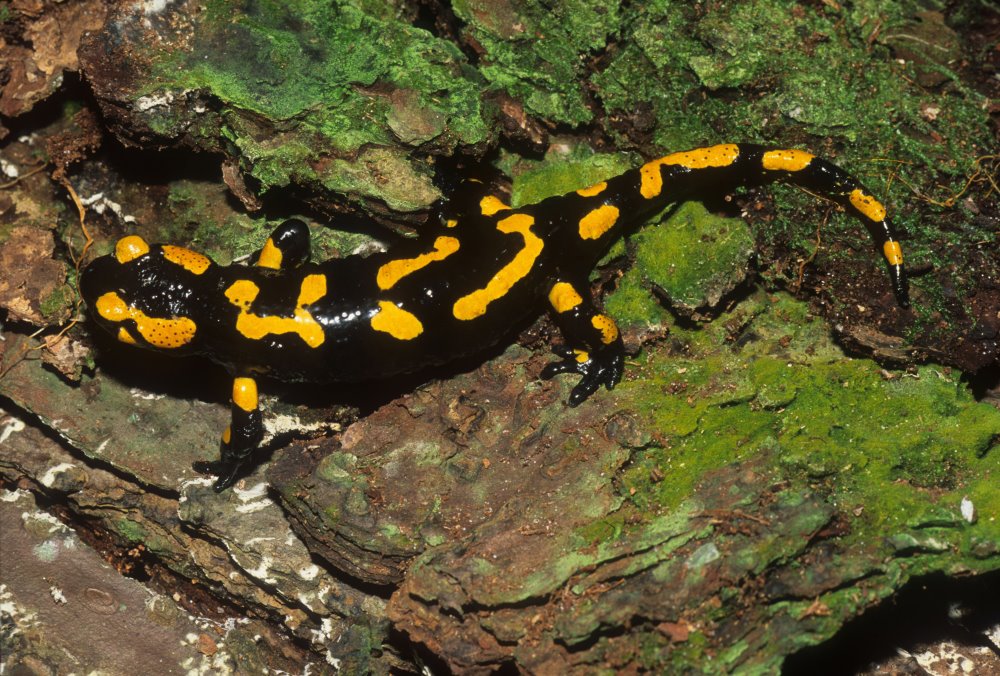
Salamandra salamandra is the fire salamander most often available in the pet trade.
Although they are now hard to access in the USA, occasional fire salamanders may be offered in the pet trade. They are, roughly speaking, the Old World ecological equivalent of our ambystomatid species.
Fire salamanders are lovers of coolness, their ranges extending from cool, temperate lowlands to high into the European Alps. They are ovoviviparous, adult females bearing about a dozen gilled, living young in cool shallows. The gills may be prominent and well-developed, or in the perpetual coldness of alpine regions, nearly entirely resorbed at birth.
When keeping and breeding fire salamanders, coolness and cleanliness should be your 2 major concerns (of course this holds true for all caudates). Since salamanders like to burrow, and must be moist, several inches of fresh, damp (NOT WET), unmilled sphagnum moss will adequately provide for their needs. Or if this simple setup is not to your taste, you may prefer to make a naturalistic masterpiece having plantings of mosses, selaginellas, or even readily available potted plants such as vining philodendrons. Flat rocks, and driftwood can then be added to your taste. As with the sphagnum, the substrate should be kept damp, not wet.
Since amphibians absorb their moisture requirements through their skins and mucous membranes, it is unnecessary to provide a drinking dish but this is optional and will be needed, as will temperature cycling, if successful breeding is to occur.
Although it is entirely unlike the newts in appearance, the European fire salamander is a member of the same family, the Salamandridae. There are a number of subspecies (now often considered species) of this terrestrial caudate, their separation being based upon pattern (as well as locality and genetics).
The common fire salamander bears the redundant nomenclature of Salamandra salamandra. Hardly could a more beautiful salamander be imagined. The stocky, six inch length of the fire salamander is clad in glandular black skin highlighted with spots and stripes of intense, metallic, yellow. The head is broad and flattened and a pitted parotoid (nape) gland is present on both sides of the neck. The skin and parotoid secretions of the fire salamander are more toxic than are those of most other salamander species. Although it will not harm you (or them) to handle them gently, wash your hands before rubbing your eyes or putting your finger in your mouth.
Enough said.
Continue reading "Fire Salamanders"
|



